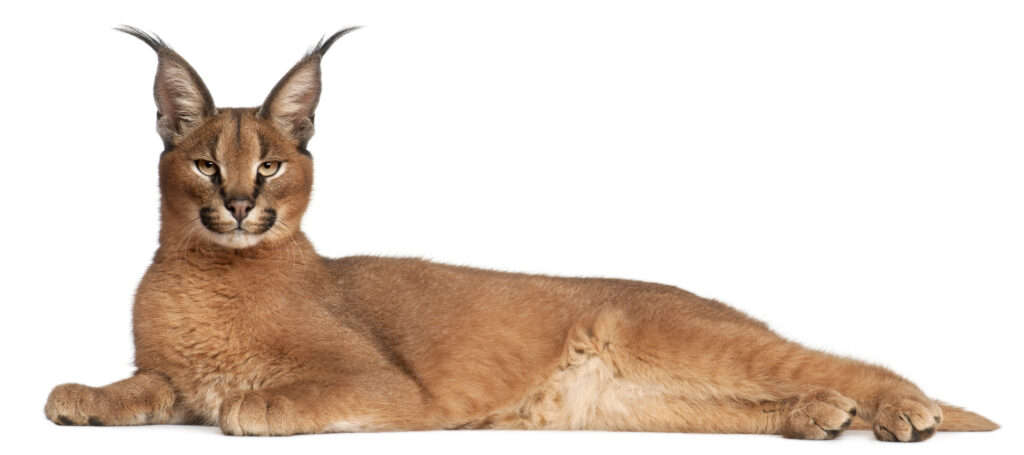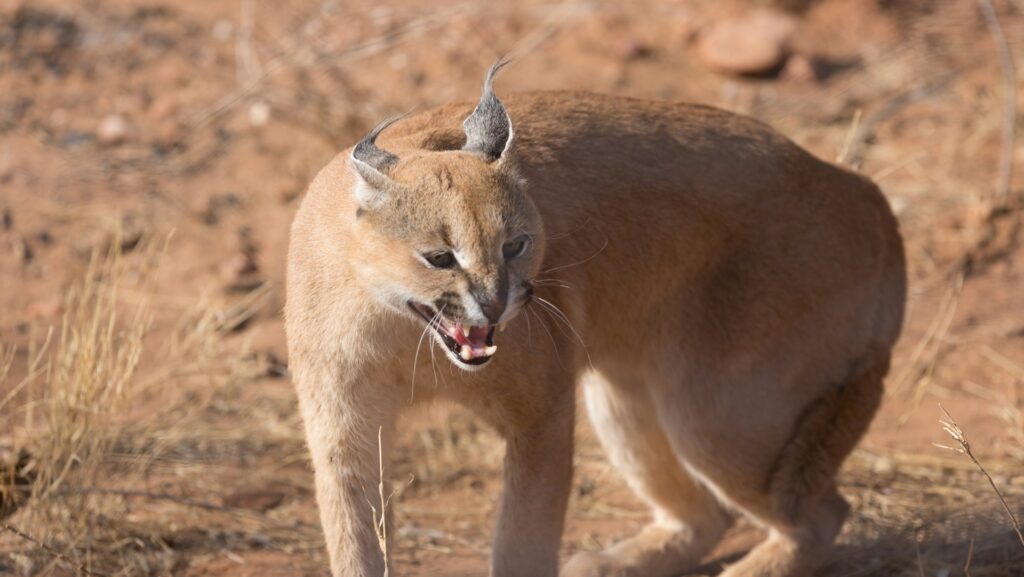The African Caracal, known scientifically as Caracal Caracal, is a captivating medium-sized wild cat with a rich history and unique characteristics. Derived from the Turkish word ‘karakulak,’ meaning ‘black-eared,’ these solitary and territorial creatures play a crucial role in maintaining the delicate balance of ecosystems across their expansive geographical range, from North Africa to the Arabian Peninsula and the Middle East.
Thriving in woodlands, savannas, and bushes, the African Caracal showcases adaptability by avoiding sandy deserts. Unlike many feline counterparts, they prefer open areas but still require some form of cover, such as trees or rocks. South Africa, with its woody savannas and rocky hills, is a particularly favored region for these elusive cats.

Caracals communicate through a range of vocalizations, including growls, hisses, barks, meows, and distinctive cough-like sounds. Their impressive hearing and vision aid in navigating their surroundings, and tactile communication becomes prominent during the mating season. These cats are nocturnal but can be active during the day where human disturbance is minimal.
Caracals contribute significantly to population control, preying on rodents and other small animals. Their opportunistic diet, adept hunting skills, and ability to leap up to three meters to catch birds in flight make them formidable predators. While they face threats from larger predators like lions, leopards, and hyenas, caracals play a vital role in maintaining a healthy ecosystem.

In history, caracals were trained in India and Persia for hunting purposes. In contemporary times, the South African Air Force employed them to control bird populations near runways. However, negative perceptions in farming communities labeled them as ‘vermin’ due to livestock predation, a perception now changing with their protected status.
The African Caracal, with its grace and adaptability, stands as a symbol of wild beauty. Conservation efforts must intensify to protect their habitats and ensure their survival. As guardians of biodiversity, these magnificent cats play an integral role in maintaining the delicate balance of ecosystems, reminding us of the importance of coexistence with the diverse species that share
our planet.
Contributor @Khaki Bush magazine
Images Credit @Elemento

